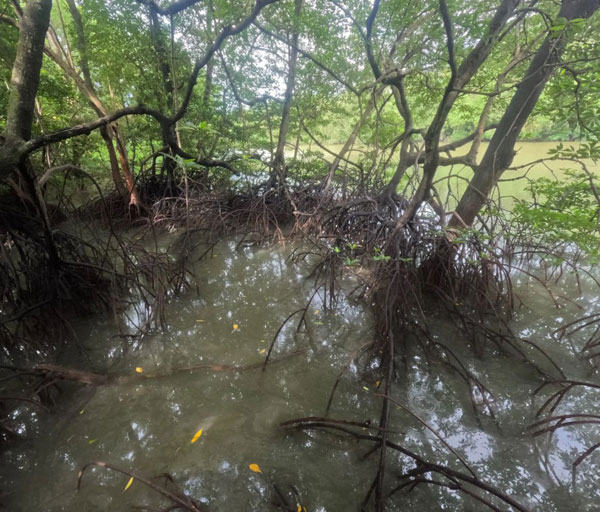Singapore aims to expand critical mangrove conservation efforts in the fight against climate change

[Singapore's largest mangrove area located in the Sungei Buloh Wetland Reserve. Photo credit to Jonathan Moon]
Despite limitations attributed to its small size, Singapore has announced ambitious plans to open a mangrove forest with around 9,000 trees by 2026.
This effort aims to reduce decades of human development that have led to the destruction of mangrove trees, with Nparks estimating that only around 5 percent of the original number of trees has been retained since the 1800s.
Urbanization has taken a toll on Singapore’s natural ecosystem, transforming wet marshlands into sandy beaches in Sentosa and sprawling shopping malls in Orchard Road.
According to the Business Times, most of the damage can be blamed on land reclamation efforts in the 1970s, converting Singapore’s aesthetically unappealing rivers and wetlands into beautiful freshwater reserves.
This process resulted in the destruction of mangrove trees, considered unattractive due to their twisting roots, widespread foliage, and the brackish nature of the water they reside in.
The current initiative began in 2017, with the National Parks Board partnering with banking giants such as Overseas Chinese Banking Corporation(OCBC) to better preserve Singapore’s mangrove forests.
Nparks will naturally cultivate around 8,000 trees in abandoned aquaculture ponds on Pulau Ubin, with OCBC supplementing another 1,000 trees at the same location.
The various organizations hope to finish the park by 2026, with recreational activities available to the general public shortly after.
Mangrove forests are sought after by Singapore for three main reasons.
First off, they are one of the most productive wetlands in the world.
According to the Straits Times, the 9,000 trees to be planted are estimated to capture nearly 30 million kilograms of carbon dioxide throughout their lifetimes.
Adding on to this are the benefits to water quality.
Despite the sediment heavy nature of mangrove forests, it serves to filter various pollutants from the water, allowing for cleaner rivers.
Secondly, mangroves provide a nursing ground for various life forms, offering a home to nearly 1,500 plants and animals, according to a UN article.
With nearly 15 percent of these animals being at risk of extinction, it is crucial that initiatives such as the one taken by Singapore are successful.
Lastly, mangroves act as a stalwart defense against a plethora of natural disasters.
Their roots and trunks can absorb the impacts of waves and stabilize the surrounding soil, a feature that may prove useful in the tangential venture of coral preservation in Singapore.
Studies indicate the potential for nearly four times the return on any investments made in cultivating mangrove forests, making it quite a lucrative initiative not only environmentally but also economically.
However, Adrian Loo from Nparks states that the only way for these initiatives to succeed is through “a sense of stewardship among Singaporeans — towards our trees and environment.”
He highlights the need for collaboration and a hopeful outlook towards Singapore’s green future.

- Jonathan Moon / Grade 10
- Singapore American School

![THE HERALD STUDENT REPORTERS [US]](/assets/images/logo_student_us.png)
![THE HERALD STUDENT REPORTERS [Canada]](/assets/images/logo_student_ca.png)
